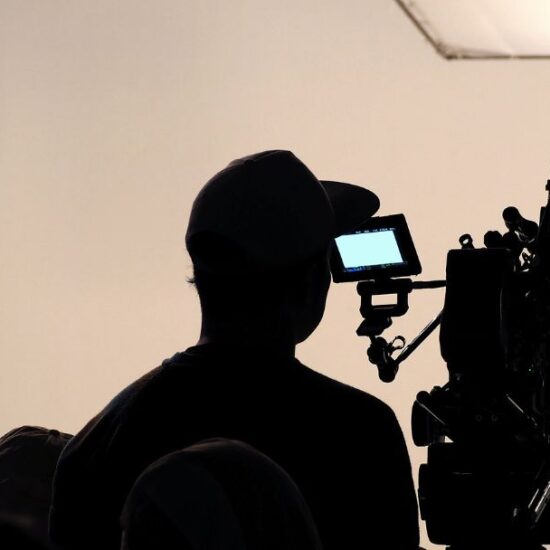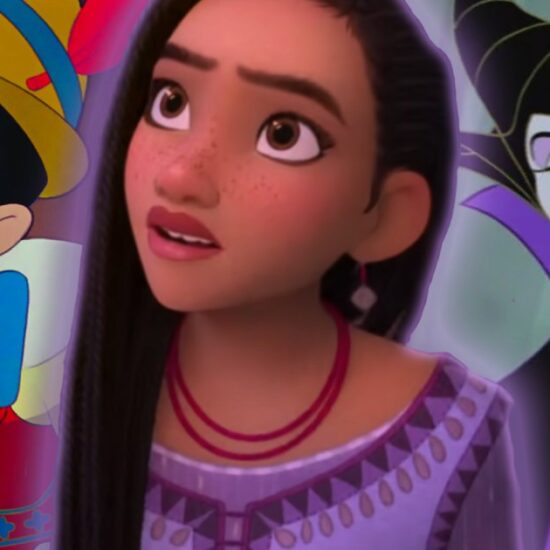
Lights, camera, animate! Welcome to the captivating world of animated filmmaking. In this article, we’ll unveil the magic behind animated storytelling with Anideos. As a pioneering animation studio, Anideos revolutionizes the industry with their innovative 3D animation services. Get ready to be enthralled as we explore the evolution of animation, the art of character design, the power of animation techniques, and the impact of animated films. Join us on this journey as we discover how Anideos is shaping the future of animated filmmaking, one frame at a time.
The Evolution of Animated Filmmaking
From the early days of traditional hand-drawn animation to the modern techniques we see today, animated filmmaking has come a long way. Advancements in technology have played a significant role in transforming the animation industry. The introduction of computers and digital software has revolutionized the way animations are created, allowing for more precise control and efficiency in the process.
One of the most notable advancements in animated filmmaking is the rise of computer-generated imagery (CGI). CGI has opened up a whole new world of possibilities, enabling animators to create stunning visuals and realistic characters. This technology has been used in numerous blockbuster animated films, captivating audiences with its immersive and lifelike animation.
The Art of Storyboarding
Before any animated film can come to life, a blueprint must be created. This is where storyboarding comes into play. Storyboarding involves visualizing the narrative through sketches and illustrations, laying out the sequence of scenes and shots. It serves as a guide for animators, directors, and other creative professionals involved in the production process.
Storyboarding allows filmmakers to plan out the composition, camera angles, and overall visual style of the film. It helps ensure that the story flows smoothly and effectively communicates the intended emotions and messages to the audience. By meticulously planning each frame, animators can bring their vision to life in a cohesive and engaging manner.
Character Design and Development
One of the key aspects that sets animated films apart is the ability to breathe life into characters. Character design plays a crucial role in the success of an animated film, as it is through these characters that audiences form emotional connections and invest in the story.
Creating unique and memorable character designs requires a combination of creativity and attention to detail. Each character must have distinctive features, personalities, and traits that make them stand out. Additionally, animators need to consider how these characters will evolve and grow throughout the story, crafting compelling character arcs that resonate with the audience.
The Power of Animation Techniques
Animated filmmaking encompasses a wide range of animation techniques, each with its own unique charm and appeal. Traditional animation techniques, such as hand-drawn animation, have a timeless quality that evokes nostalgia and artistry. The dedication and craftsmanship involved in creating each frame by hand result in a visually stunning and expressive form of animation.
Another technique that has gained popularity is stop-motion animation. This method involves capturing a series of still images, where physical objects or models are meticulously moved in small increments between each frame. Stop-motion animation offers a tangible and tactile quality, allowing for incredible creativity and versatility in storytelling.
In recent years, 3D computer animation has become a dominant force in the industry. This technique involves creating virtual three-dimensional models, which are then animated and rendered with computer software. 3D animation provides a level of realism and depth that immerses audiences in the animated world. It has become the go-to choice for many animated films, pushing the boundaries of what is visually achievable.
Voice Acting and Sound Design
While animation is a visual medium, the power of voice acting and sound design should not be underestimated. Choosing the right voices for animated characters is essential in bringing them to life. Talented voice actors can infuse personality and emotion into their performances, giving depth and authenticity to the characters they portray.
Sound effects and music are also vital in enhancing the storytelling experience. From subtle ambient sounds to impactful explosions, sound effects add richness and texture to the animated world. Additionally, a carefully composed score can elevate the emotional impact of key moments in the film, effectively conveying the mood and enhancing the narrative.
Scriptwriting for Animated Films
Crafting compelling narratives for animated films requires a unique approach. While the basic principles of storytelling apply, animated scripts often incorporate humor, wit, and imaginative concepts. The use of visual gags and clever dialogue can elicit laughter and engage the audience, making the storytelling experience memorable and enjoyable.
In animated films, the script serves as a foundation for the entire production process. It outlines the plot, character interactions, and key moments in the story. Writers must strike a balance between entertaining the target audience, delivering a meaningful message, and creating a cohesive narrative that captures the essence of the animated world.
Animation Production Pipeline
The animation production pipeline is a step-by-step process that takes an animated film from concept to final product. It involves various stages, including pre-production, production, and post-production, each with its specific tasks and responsibilities.
During pre-production, the concept and vision of the film are developed. Storyboards are created, character designs are finalized, and the script is polished. Once these elements are in place, production begins, where the actual animation takes place. Animators bring the characters and scenes to life, breathing movement and emotion into the story.
Post-production involves the final touches, including editing, sound design, and visual effects. This is where the different components of the film are combined to create the finished product. It’s a collaborative effort that requires the coordination of artists, animators, technicians, and other professionals involved in the production.
Lighting and Color in Animated Films
Lighting and color play a crucial role in setting the mood, atmosphere, and overall visual aesthetics of animated films. Through strategic lighting techniques, animators can create depth, contrast, and shadows, adding realism and depth to the scenes. Different lighting setups can evoke various emotions, from warm and inviting to cold and mysterious, enhancing the storytelling experience.
Color palettes are carefully chosen to convey emotions, reflect the narrative tone, and differentiate various settings and characters. Vibrant and bold colors can create a sense of excitement and energy, while muted and desaturated tones can evoke a more somber or melancholic mood. The careful use of color helps immerse the audience in the animated world and enhances the overall visual impact.
Creating Stunning Visual Effects
Visual effects in animated films go beyond the boundaries of reality, offering limitless possibilities for creative storytelling. Whether it’s magical transformations, explosive action sequences, or fantastical landscapes, visual effects add an extra layer of excitement and spectacle to the film.
Advancements in technology have enabled animators to push the boundaries of visual effects even further. From fluid simulations to realistic particle effects, animators can create breathtaking visuals that captivate the audience. The integration of special effects seamlessly blends with the animation, enhancing the narrative and immersing viewers in a visually stunning experience.
Marketing and Distribution of Animated Films
Once an animated film is complete, the next crucial step is marketing and distribution. Promoting the film to the target audience requires a well-thought-out strategy that includes advertising, social media campaigns, press releases, and collaborations with partners and influencers.
Finding the right distribution channels is also vital to maximize the reach of the film. This includes securing deals with theatrical distributors, online streaming platforms, and home video releases. By making the film accessible to a wide audience, animators can ensure that their work reaches as many people as possible and achieves commercial success.
Animation in Different Genres
Animated films are not limited to a specific genre. Animation offers versatility that allows storytellers to explore various genres, including comedy, drama, and action. From light-hearted comedies to thought-provoking dramas, animated films can cater to diverse tastes and engage audiences across different age groups.
In comedy animations, the imaginative and exaggerated nature of animation opens the door to creative and in comedy animations, the imaginative and exaggerated nature of animation opens the door to creative and humorous storytelling. Animated characters can defy the laws of physics and engage in slapstick comedy, creating entertaining and laugh-out-loud moments.
Drama animations, on the other hand, delve into deeper emotions and tackle complex themes. Animated films have the ability to explore profound topics in a visually compelling and emotionally resonant way. Through nuanced character development and powerful storytelling, animated dramas can leave a lasting impact on the audience.
Action animations utilize the dynamic and fast-paced nature of animation to deliver thrilling and adrenaline-pumping sequences. With the freedom to create visually stunning action set pieces, animators can push the boundaries of what is possible, immersing viewers in exciting and action-packed adventures.
Anideos: Revolutionizing Animated Filmmaking
Anideos, a pioneering animation studio, is revolutionizing the world of animated filmmaking. With their innovative techniques and tools, Anideos has been at the forefront of pushing the boundaries of animated storytelling. They embrace cutting-edge technology and combine it with artistic vision to create captivating and visually stunning animated films.
Anideos places a strong emphasis on storytelling, recognizing the importance of engaging narratives that resonate with audiences. They believe that technology is a powerful tool, but it is the storytelling that truly captivates and connects with people. Through their films, Anideos strives to inspire and entertain, leaving a lasting impact on viewers.
The Impact of Animated Films on Society
Animated films have proven to be a powerful medium for social commentary and cultural reflection. They have the ability to address important issues and convey messages in a way that is accessible and impactful to audiences of all ages. From environmental concerns to themes of inclusivity and diversity, animated films can inspire positive change and foster empathy.
Moreover, animated films have had a significant influence on popular culture. Iconic characters, memorable catchphrases, and unforgettable moments have become ingrained in society. Animated films have the ability to shape childhood memories, instill values, and ignite imagination. They have become a beloved part of our cultural fabric.
The Future of Animated Filmmaking
As technology continues to advance, the future of animated filmmaking holds exciting possibilities. Emerging technologies like virtual reality (VR) and augmented reality (AR) have the potential to revolutionize the way animated stories are experienced. Viewers may have the opportunity to step into the animated world, becoming active participants in the narrative.
Additionally, the integration of artificial intelligence (AI) and machine learning can streamline the animation process, making it more efficient and accessible. AI algorithms may be able to generate realistic animations and assist in the creation of lifelike characters and environments.
Predictions for the next wave of animated storytelling include enhanced interactivity, personalized narratives, and even more realistic visuals. The evolving landscape of animation promises to captivate audiences with immersive and groundbreaking experiences.
Conclusion
Animated filmmaking continues to captivate audiences with its mesmerizing visuals, engaging storytelling, and boundless creativity. From traditional hand-drawn animation to cutting-edge CGI, the evolution of animation techniques has paved the way for stunning and unforgettable films.
Anideos stands as a testament to the innovation and artistry within the animation industry, redefining the boundaries of what animated storytelling can achieve. With each new technological advancement, the future of animated filmmaking holds immense potential for even more awe-inspiring and impactful storytelling.
Harvey is an award-winning director and writer, known for writing many bios including this one and the one on his Instagram account. In 2022 he shot his latest short film Are We Doing This? which is currently in crowdfunding on Indiegogo. He has directed several other shorts including The Many Faces of Beth Jones, Yes, Virginia, and the award-winning Life’s a Show.
If he’s not busy making films or feeling uncomfortable writing a biography in the third person, you’ll find him at Raindance as the Filmmaker in Residence.














